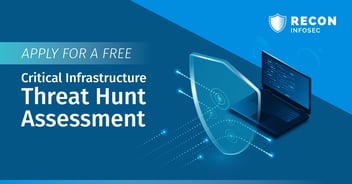Mastering Threat Hunting Operations: A Deep Dive into Recon InfoSec’s Approach
In today’s rapidly evolving cyber threat landscape, proactive defense is no longer optional—it’s essential. At Recon InfoSec, our Managed Security Operations (MSO) team makes threat hunting a cornerstone of continuous cybersecurity improvement. This blog post explores the comprehensive approach Recon takes to threat hunting operations, highlighting methodologies, tools, and best practices that empower security teams to detect and mitigate threats.
What Is Threat Hunting?
Threat hunting is the proactive search for malicious activity within an environment—threats that may have already bypassed traditional defenses. Unlike reactive incident response, threat hunting is proactive—it assumes adversaries are already inside your network and focuses on uncovering their presence through hypothesis-driven investigation. The goal is to develop a baseline understanding of your environment, validate existing detections, create new ones, and implement controls to prevent or mitigate attacks.
The Foundation: Threat Intelligence and Research
Effective threat hunting begins with gathering intelligence from diverse, reputable sources. Recon leverages a broad spectrum of threat feeds and research platforms, including BleepingComputer, CISA, FortiGuard Labs, Microsoft Security Blog, MITRE, VirusTotal, even social media channels like Reddit and Twitter. These sources provide critical insights into emerging threats, malware behaviors, and attacker tactics, techniques, and procedures (TTPs). By continuously monitoring these open source inputs, hunters stay ahead of adversaries and tailor their investigations accordingly.
Want to learn more about building your own threat feeds? Check back later for an upcoming OSINT blog post!
Types of Threat Hunts
Threat hunts can take many forms, we’ve broken them down into the most relevant ones for any organization to get started.
Recon categorizes threat hunts into three primary types to balance speed, accuracy, and depth:
- Research-Based Hunts: These hunts leverage detailed threat reports and malware analysis. Pro: High-fidelity data. Con: Requires deep technical expertise and time.
- IOC-Based Hunts: Focused on Indicators of Compromise (IPs, hashes, domains, filenames). Pro: Quick to set up using open-source feeds. Con: Indicators can have low fidelity and are often too broad.
- Audit-Based Hunts: Triggered by internal changes (audits, policy changes, or hardware/software modifications) to verify baselines. Pro: Verifies the integrity of your environment. Con: Not always a direct response to a security threat.
Each hunt type serves a unique purpose in the overall detection strategy, balancing speed, accuracy, and depth.
Developing Hypotheses and Theories
A hallmark of Recon’s threat hunting methodology is the use of structured hypotheses based on the “who, what, when, where, and especially how” of potential threats.
Hunters ask critical questions to form a hypothesis:
- Who are the likely adversaries?
- What threat does this pose to us?
- What logs exist to detect malicious behavior?
- Where are our most vulnerable assets?
- How could an attacker bypass our controls?
The Cyber Kill Chain framework is instrumental in guiding our hunters. We anticipate attacker behaviors at each stage, from initial access (e.g., analyzing web server and VPN logs) to persistence (e.g., identifying suspicious Sysmon event IDs) and eventual exfiltration (e.g., monitoring large data transfers). This behavioral lens helps hunters craft precise queries and focus on relevant log data.
Crafting Effective Hunt Queries
Recon’s hunters craft effective queries derived from OSINT, IOCs, and audit logs. Our queries hunt for:
- Specific malicious file hashes
- Suspicious command lines invoking PowerShell or cURL
- Unusual login events tied to privileged accounts
- Registry Changes and additions
- DNS activity related to C2
To accelerate this process, we're developing the ReconAI investigator tool (in Beta as of August 2025). This tool dynamically creates searches based on simple user questions, making the hunt faster and more intuitive.
Documenting and Summarizing Findings
Thorough documentation is vital. Hunters maintain case logs detailing objectives, findings, screenshots, metrics, and any ideas for future detections or countermeasures. This disciplined record-keeping is not just for our benefit—it's how we build a stronger, more resilient security posture for our clients.
Detection Coverage and Creation
To measure detection coverage, Recon cross-references known hashes and threat data against repositories like Joe Sandbox, SigmaHQ, and VirusTotal. When gaps are found—such as emerging threats without existing signatures—new detections are crafted. For example, Recon developed rules targeting a fake AI campaign’s malicious files after validating minimal false positives, enabling rapid deployment of effective detection capabilities.
Conclusion
Recon InfoSec’s MSO threat hunting operations are not just a service—they are a new standard for cybersecurity. By combining rich threat intelligence, diverse hunt types, hypothesis-driven investigations, advanced tooling, and rigorous documentation, Recon empowers defenders to find hidden threats early and respond decisively. By fusing rich threat intelligence with a structured, hypothesis-driven approach, we transform passive defense into an active, strategic advantage.
Ready to stop waiting for alerts to an Active Defense approach? Let's discuss how our Managed Security Operations can make your security posture truly resilient.


